You probably already have an idea of what to expect with the Samsung Galaxy S21 Ultra. Besides its dashing display, a powerful set of cameras, and beastly performance, it’s actually way more than what it looks.

With an “ultra” price tag, it is expected to go beyond its predecessor and most flagships in the market today, for that matter. So the question is, is the Galaxy S21 Ultra magnificent enough for its eye-popping price? And would you buy it despite the lack of a charging brick? Let’s find out.
Table of Contents
Design and Construction
The S21 Ultra has a few similarities to last year’s S20 Ultra. It’s a bit smaller yet still acceptably chunky to grip. You might want to use your two hands when using it.

Its frosted Gorilla Glass Victus back compliments the glossy aluminum frame, making it look very sleek and classy, especially in this Phantom Black color that we have. Locally, there’s also a Phantom Silver colorway available, but we’d still pick this deep black variant if you ask us.

So the S21 Ultra’s metal rear camera module sure is a head-turner. It’s protruding and looks larger than what we’re used to, but somehow Samsung managed to make it look smooth and cool by seamlessly blending it towards the edge. We like it! But then again, it is still uneven.

Upfront, we get a massive edge to edge display that’s just a real feast for the eyes. Like the S20 series, you can find the front camera on a hole punch set up in the upper middle part of the display.
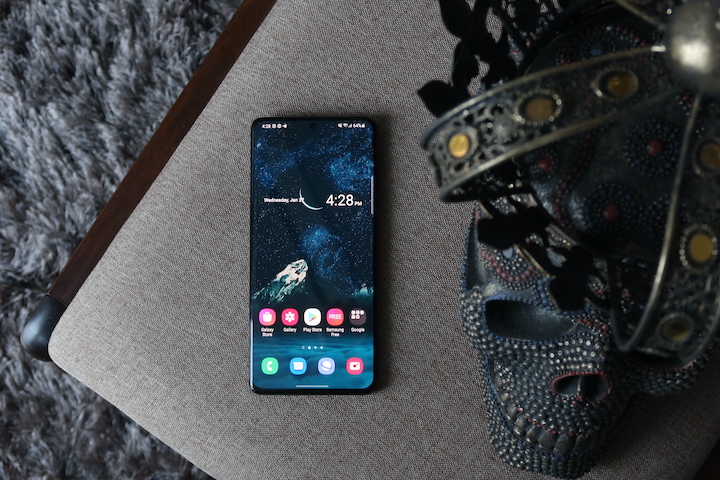
For buttons and ports, we get some antenna bands all around. The left side is bare, while located on the right are all the buttons, specifically the volume rocker and the power/Bixby button.

Up top are two microphones, and at the bottom are its loudspeaker, USB Type-C port, main microphone, and a dual SIM tray with no dedicated slot for a microSD card.

The phone is sealed with IP68 water and dust-resistant, so it can withstand up to 1.5 meters deep at a maximum of 30 minutes—pushing it to its limits wouldn’t be the best idea, though.
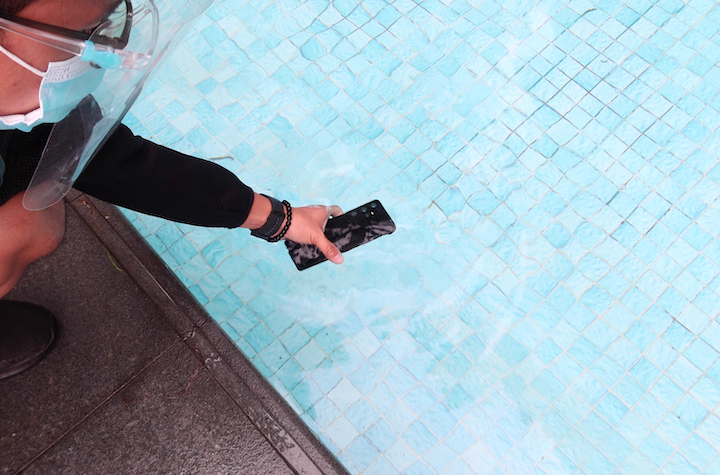
Overall, the S21 Ultra’s design and build stand out, even compared to its siblings, the S21 and S21+. It’s elegant, polished, and the sleek camera design is just hard to hate.
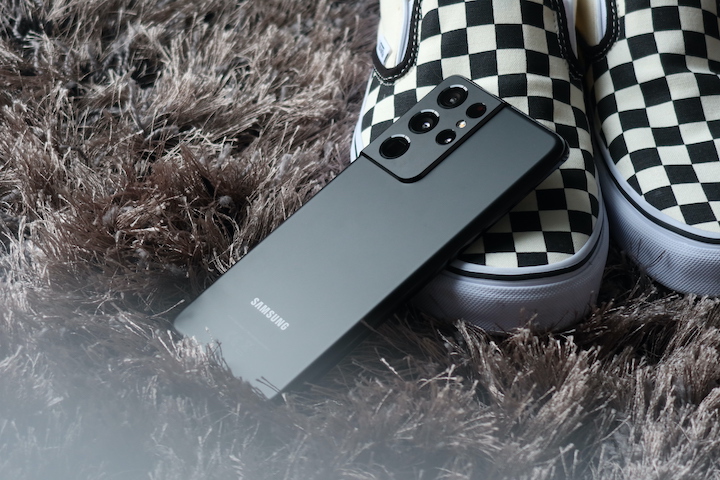
Display and Media
More on that display, the S21 Ultra shows off a 6.8-inch Edge Dynamic AMOLED 2X Display with a resolution of 1440 x 3200px and a pixel density of 515ppi. And just like its back, it has Gorilla Glass Victus on top for protection.
From near or far, this display is utterly stunning. Samsung doesn’t disappoint when it comes to their AMOLED panels, but this one truly has a wow-factor, and we can’t get enough of it. It provides a buttery smooth experience with vibrant colors and deep blacks.
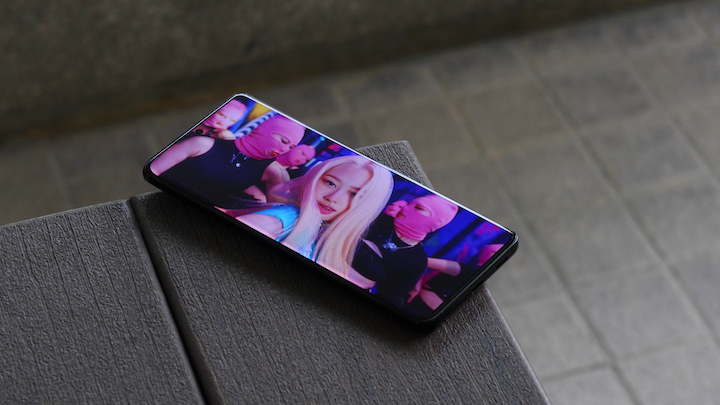
The resolution can be switched from Wide Quad HD+ to Full HD+, or a lower HD+ if you want to save battery and increase game frame rates. As for refresh rates, the option to switch between 60Hz and 120Hz is no longer available; instead, we get a Standard mode, which is purely 60Hz, and an Adaptive refresh rate that automatically adjusts from 10Hz up to 120Hz.

This is a game-changing feature that changes the way we look at high-refresh smartphone displays. Realistically, you don’t need that buttery smooth 90Hz or 120Hz, or even 144Hz all day. All that would do is drain your battery life. But since the S21 series features a dynamic refresh rate, this problem is alleviated. You get that maximum 120Hz for when you’re playing games or doing some smooth scrolling, but also 10Hz for viewing static images or text files.
The Eye Comfort Shield or blue light filter also now has an Adaptive mode, so it will automatically adjust based on the day’s time.
Other awesome display features include a peak brightness of 1600 nits, support for HDR10+, a new and improved ultrasonic under-display fingerprint sensor, and of course, the S-Pen support, which is a first for Samsung’s Galaxy S-series. This means that while S-Pens will work on the S21 Ultra, it doesn’t have an actual S-Pen slot built-in. For that, you’ll have to get a separate case.

When it comes to audio, expect an immersive experience as sound comes from the downward-firing speaker and its earpiece. The two speakers’ combination is great, with good clarity and balance, although there’s not much bass present.
Then again, it’s loud enough to be heard in a medium-sized room, and you can take advantage of its Dolby Atmos modes for better sound output.
Cameras
Alright, now one of the highlights of this Galaxy S21 Ultra is its cameras, and let’s dive deeper into that. It might seem like it has 5 lenses at the back, but really it has a quad-cam setup composed of a 108MP ISOCELL HM3 main sensor, a 12MP ultrawide, a 10MP 10x telephoto, and a 10MP 3x telephoto lens. The one on top of the LED flash is actually a Laser Autofocus sensor. The front camera, on the other hand, gets a 40MP sensor.
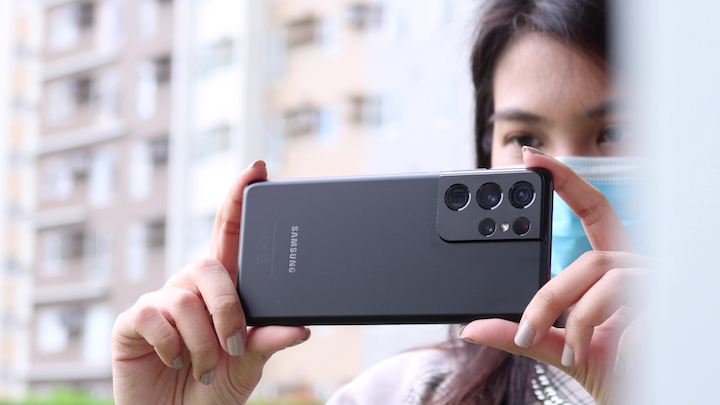
On the camera software side, we pretty much get improvements on past features like Super Steady Mode, Night Mode, Single Take Mode, and even the 100x Space Zoom that it’s well-known for. It also gives you the option to take RAW photos as well as HDR10+ videos.
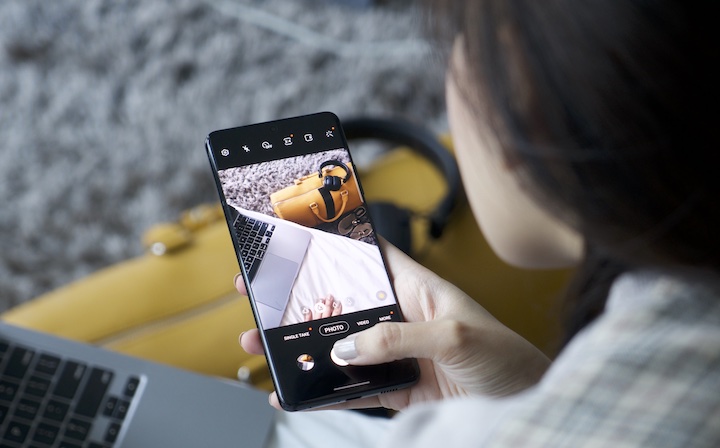
Quality-wise, photos come out rich in colors and look significantly sharp, most evidently under good lighting conditions. We get crisp details, impressive dynamic range, and oftentimes consistent colors even if the lenses change.
We found ourselves using the ultra-wide lens a lot. And although there are some washed parts on the sides sometimes, it does an excellent job matching the colors as in standard mode.
The S21 Ultra doesn’t have a dedicated macro lens. Still, thanks to its laser autofocus, it automatically detects super close scenarios to switch the camera to the 12MP lens to give you an enhanced, detailed shot. When we zoom in 3x, we get a decent quality that maintains good colors and less noise if used in low light settings. Zooming it to 10x now gives us soft details that are still clearly acceptable.
As for that 100x zoom, we must say that it did improve a lot. Of course, it’s not too clear, it’s still grainy and washed sometimes, but the details are now more visible compared to what we first saw in the S20 Ultra. Well, I don’t know if you’ll use this feature a lot, but it’s there, and it’s cool.
When it comes to night photography, when night mode is not in use, we get decent brightness, yet it looks washed out. But with night mode turned on, it surely shows big improvements in the photos’ details and brightness without looking too grainy or washed out. The night mode is also flexible for ultra-wide or up to 10x zoom takes.
Speaking of selfies, its 40MP front camera provides extra detailed photos, especially under natural or bright lighting. Like what we’re used to with Samsung, the skin tone looks natural, falling more on cooler tones. There is some noticeable skin smoothening going on, even when beauty mode is turned off. Still, like the rear cameras, we get sharp details, impressive dynamic range, and you can always take wide selfies.
When it comes to videos, you can shoot up to 8k with the rear cameras, but that will limit to only 24fps.
So we mostly stick to 4k that can be used up to 60fps. Thankfully, the video stabilization now works across all settings from HD up to 8k.
Overall, the S21 Ultra’s cameras are one of the bests that you can get on a smartphone today.
Software: OS, UI, and Apps
Running the software is OneUI 3.1, which’s based on Android 11. It didn’t go too far from OneUI 2.5, but there are some subtle yet useful improvements and touches on the interface that we appreciate. There’s the improved dark mode, Google Discover feed, Bubbles notifications that look similar to Facebook Messenger’s chat heads, and mostly refinements on the overall look and customization features.
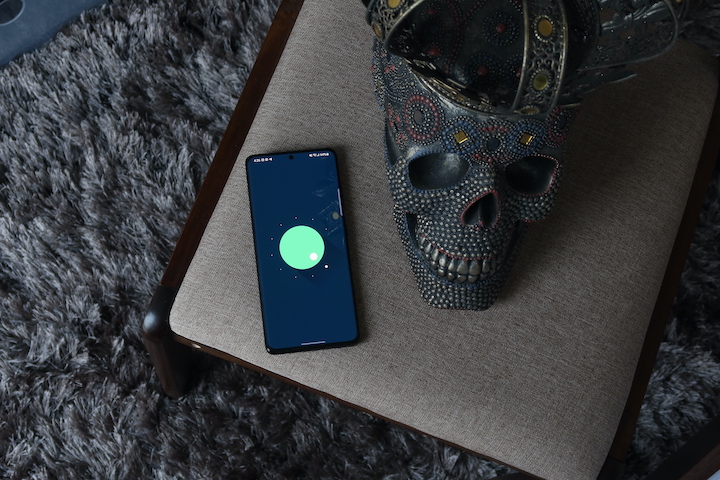
There’s still an option to use an app drawer, and you can navigate with gestures or the usual buttons if you prefer. There aren’t many pre-installed apps besides Google and Samsung’s own apps, which should be fine.
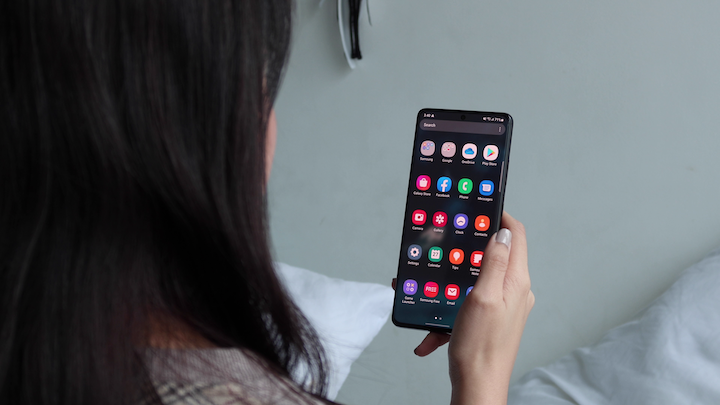
Of course, you won’t miss Bixby—Samsung’s AI assistant. At the same time, other nifty features include video enhancer, digital wellbeing, parental controls, edge lighting for notifications, one-handed mode, edge panel shortcut, Samsung DeX, and the basic S-Pen features.
For storage options, I’ve mentioned earlier that there’s no option to expand via microSD card, which is a bummer. But storage options start from 128GB to 256GB or 512GB, that’s more than enough for most users.
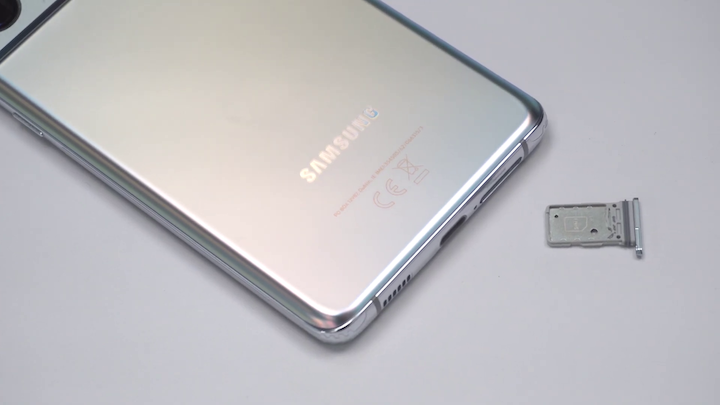
Hardware: Performance and Benchmarks
Talk about performance; as usual, we are getting two new chipsets for internal hardware — again, each reserved for specific regions. The American and Chinese markets will be getting the new Qualcomm Snapdragon 888, while the rest of the world, including us here in the Philippines, will get the new Exynos 2100 paired with a Mali-G78 GPU. As for memory, you can choose between 12GB or 16GB of RAM, and the unit we have has 12GB.

Even so, you can expect blazing performance from the S21 Ultra. Apps load quickly, multitasking is a breeze, and it can practically handle anything you throw at it without any stutters. As for gaming, the Game Launcher app automatically boosts the experience, and with the adaptive refresh rate, playing heavy games is effortlessly immersive.

We experienced some heating when using it for demanding activities, including gaming under a WQHD+ display, so we suggest lowering the resolution in such scenarios or investing in a high-quality case.
For some numbers, take a look at the benchmark scores we got:
• Antutu v8 – 563,061
• GeekBench 5 – 1,039 (Single-Core), 3,110 (Multi-Core)
• PC Mark – 12,215
• 3D Mark – 6,789 (SSE – OpenGL ES 3.1), 3,378 (SSE – Vulkan)
• Androbench – 1,575.42 MB/s (Read), 985.55 MB/s (Write)
Security
For biometrics and security, its improved Qualcomm ultrasonic under-display fingerprint sensor works really fast and reliable. It’s placed near the bottom of the display, making it easier to reach even with one hand. Meanwhile, the face-unlock works snappy too, but like most, it sometimes struggles in low light conditions.

Connectivity and Battery Life
Connectivity-wise, the Galaxy S21 Ultra got you covered with 5G, 4G LTE, NFC, Bluetooth 5.1, and it’s one of the first phones to support WiFi 6E.
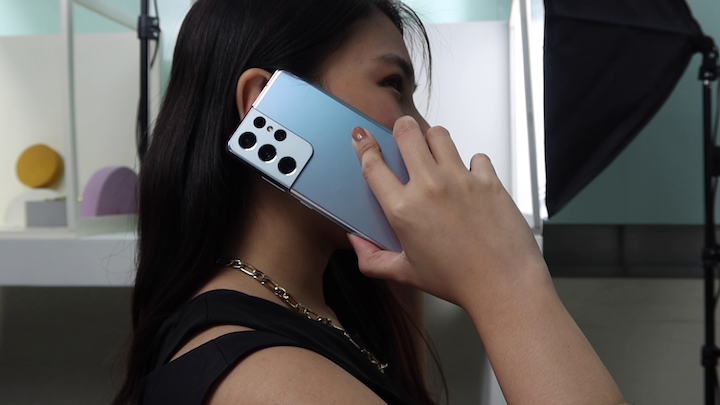
Like the S20 Ultra, this large phone is powered by a 5,000mAh battery with 25W fast charging, 15W wireless charging, and reverse wireless charging. As you probably know already, the retail unit no longer comes with a charging adapter, and the cable that comes with it is a USB-C-to-C type, so you’ll be needing a USB-PD adapter or a standard Type-C charger if you already have one. It’s not much of a bother to us because Samsung lent us a dedicated cable and adapter, but I’m sure this can be a hassle to some users.
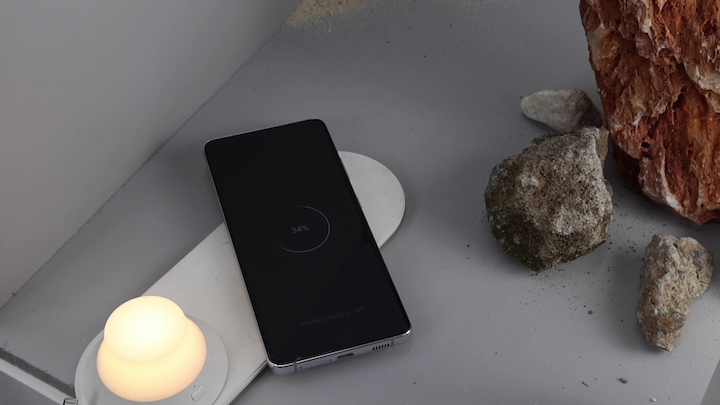
By default, the Super Fast Charging is turned on in the battery settings, which is the PD-based solution, while you can also turn on/off the Fast Charging option if you have a non-PD charger. There’s also the option to enable and disable the Fast Wireless Charging to prevent a fan noise while charging wirelessly. Charging takes an hour and 5 minutes from 0 to 100%, and that is pretty good considering its 5000mAh capacity.
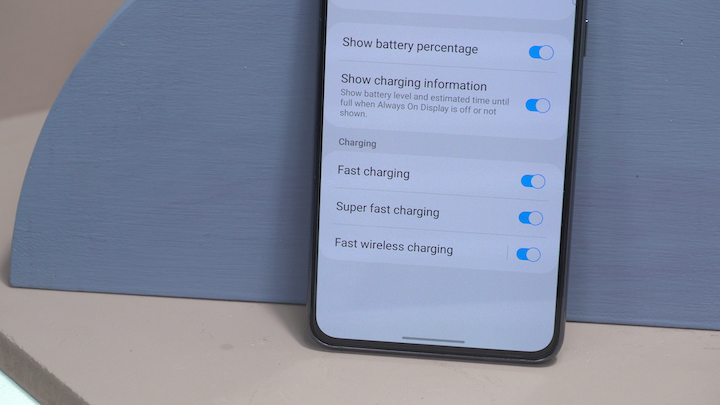
We ran it through PCMark’s Work 2.0 battery test under a 1440p resolution with the Adaptive refresh rate turned on, and we got a total of 6 hours and 58 minutes. Meanwhile, in our Standard Video Loop test where we loop a 1080p video under a 1080p display, 60Hz refresh rate, 50% brightness, 0% volume, and Airplane Mode turned on, we got a long 18 hours and 50 minutes.
So the S21 Ultra can last you a whole day with moderate use, but if you want to use it with a 1440p resolution and Adaptive refresh rate, you’ll need to charge it at least one more time in a day.
Price-Conclusion
The Galaxy S21 Ultra is priced at PHP 69,990 for the 12GB + 256GB variant, and PHP 79,990 for the 16GB + 512GB option. Compared to its predecessor, the Samsung Galaxy S21 Ultra holds note-worthy upgrades that are perfect for creatives or users with demanding lifestyles—or you just have the budget for it (we’re not judging).
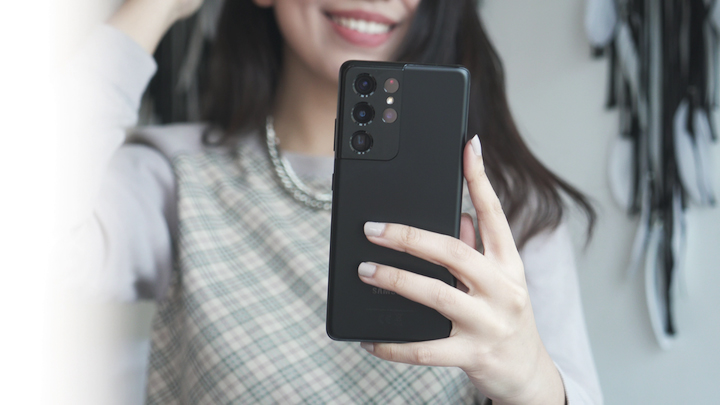
Without a doubt, it upholds the Ultra in its name and probably even beyond. You get a stellar Dynamic AMOLED display, excellent flagship performance, versatile cameras, reliable battery, IP68 water & dust resistance, S-Pen support, 5G connectivity, and even access to Wi-Fi 6E. This phone is a winner.
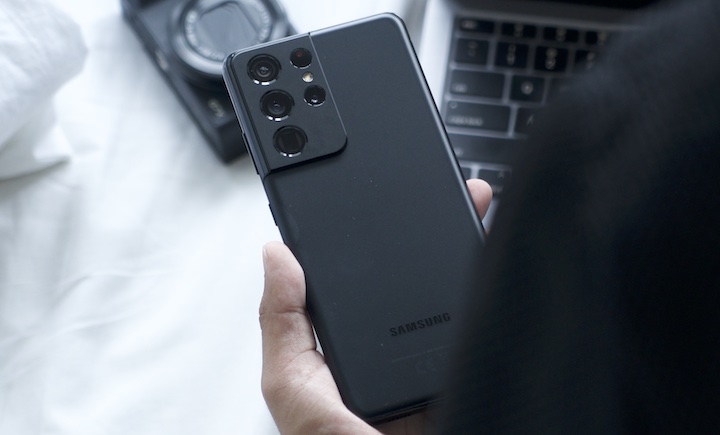
The lack of a microSD card slot, headphone jack, and the power adapter isn’t much of an issue to us personally, but we are wary of the occasional heating we experienced when using heavy apps and games. It can then be remedied with a high-quality case or by toning down the resolution and refresh rate.
So yes, for us, it’s worth the hefty price tag, and we do recommend it, especially if you’re looking for one of the best Android flagship smartphones that can last you years.
And that wraps up this review! Feel free to share with us your thoughts about the Samsung Galaxy S21 Ultra in the comments.
Samsung Galaxy S21 Ultra 5G specs:
6.8-inch Edge QHD+ Dynamic AMOLED 2X Display
10~120Hz Dynamic refresh rate
Gorilla Glass Victus
Samsung Exynos 2100
12GB, 16GB RAM
128GB, 256GB, 512GB storage
Quad-rear cameras:
• 108MP Phase Detection F1.8 (wide)
• 12MP Dual Pixel F2.2 (ultrawide)
• 10MP Dual Pixel F4.9 (10x tele, 100x Space Zoom)
• 10MP Dual Pixel F2.4 (3x tele)
40MP Dual Pixel F2.2 front camera
Dual-SIM
5G, 4G LTE
WiFi 6E
Bluetooth 5.1
NFC
GPS, A-GPS, GLONASS, BDS, Galileo
USB Type-C
Fingerprint scanner (in-display)
Face Unlock
AKG Stereo Speakers
IP68 water and dust resistance
S-Pen support
OneUI 3.1 (Android 11)
5,000mAh battery w/ 25W fast charging, wireless charging, reverse wireless charging
75.6 x 165.1 x 8.9mm
229g(mmW), 227g(sub6)
Phantom Black, Phantom Silver

























